Results 8,301 to 8,310 of 12096
Thread: Anandtech News
-
06-20-18, 09:34 AM #8301
Anandtech: My Face on a CPU Cooler: Two Minutes with ASUS’ Ryujin CLC
One of the first events of the Computex week was ASUS’ Republic of Gamers press conference. In typical ASUS fashion, a glut of about 11 press releases landed in our inbox at once, with ASUS following the philosophy about dominating the news at any one exact moment. This has its downsides, such as the medium and low-impact news getting lost in all the noise. One of the items in that noise was about ASUS’ ROG branded CPU coolers, Ryujin and Ryuo. We actually wrote about them here and here.
One of the headlines coming away from that news was that both of the CLCs had embedded OLED displays on the CPU block. Either ASUS had a spare stock of OLED panels in the warehouse or something, because this idea is relatively esoteric, especially when the display has to compete with a bunch of LEDs in the case as well. The OLED display is capable of showing pictures, gifs, video, or system statistics.
Of course, with ASUS having the cooler on display and a webcam attached, the goal was to put ones glorious features on the unit. With my five o’clock shadow in place and chins in order, the process was relatively painless. The end result was something akin to a LinusTechTips YouTube thumbnail. I have lots to learn, clearly.
The software was clearly still a very early beta, and an ASUS rep was managing the station set up to take the pictures, perhaps showing that the software still has a while to go.
If that wasn’t enough, aside from the 1.77-inch OLED display, the Ryujin also uses an embedded fan in the block to help blow air over the nearby socket components, such as the power delivery, in order to avoid a completely still air scenario.
Buy AMD Ryzen 7 2700X on Amazon.com
Want to keep up to date with all of our Computex 2018 Coverage? 
Laptops
Hardware
ChipsFollow AnandTech's breaking news here!
More...
-
06-20-18, 12:08 PM #8302
Anandtech: The InWin Ego Fan: The Ultimate RGB LED Fan
If you are not completely frustrated by RGB LED components by now, this might put you over the top. The Ego fan from InWin is designed to be the ultimate RGB LED fan by using a silicone diffuser around the edges of the fan to give a software and cleaner LED experience.
This silicone diffuser also allows InWin to place more RGB LEDs inside without overpowering the emitted light, but also contributes to the cleaner look. I’m not one for RGB for the sake of RGB, however these fans have one of the best implementations of RGB I’ve seen on any PC component so far (the G.Skill Royal DRAM is pretty good too).
Because of having more LEDs (12 outside, 4 inside) than a standard fan, and the fact that the fans can be daisy chained for better control, when using an all-white color, the power draw can result in a brightness decrease over the length of the daisy chain – in order to combat this InWin also supplies power strips that ensure power is distributed evenly across each fan. With these strips, InWin daisy chained what look like a couple of hundred fans together in the display.
A kit of three fans is set to cost around $150, and comes with a controller box and software to manage the LEDs. InWin is also looking into a remote control for the setup. All this means that individual fans might come in around $50, which is a lot for a fan. It all depends how much a user or SI wants to implement a unified diffuse LED arrangement.
Buy In Win 101 on Amazon.com
Gallery: The InWin Ego Fan: The Ultimate RGB LED FanWant to keep up to date with all of our Computex 2018 Coverage? 
Laptops
Hardware
ChipsFollow AnandTech's breaking news here! 





More...
-
06-20-18, 12:08 PM #8303
Anandtech: ASRock Rack Goes AMD: EPYCD8 Workstation Motherboard
One of the lesser known companies to play in the server space is ASRock Rack, a subsidiary of the consumer focused ASRock. Much like other smaller server platform providers, ASRock Rack typically provides systems based on customer specific requirements but also offers motherboards, chassis, and various designs to distributors and end users. Up until this year, ASRock Rack was purely about Intel, with options for Xeon Scalable, Xeon D-1500, Xeon D-2100, and also the Atom C2000 Avoton and C3000 Denverton ranges. At Computex, the company showed its first AMD EPYC offering.
The EPYCD8 motherboard implements a very typical 1P workstation design, with the socket on its side in order to assist forced airflow through the heatsink and memory. In the sorts of chassis that this motherboard will go into, high-powered fans will push air from the traditional ‘right’ side of the motherboard to the left, hence the reason for this orientation.
The PCIe slot allocation looks numerous, and this arrangement also comes with dual M.2 slots and dual mini-SAS ports, taking full advantage of the EPYC platform’s PCIe lanes. As with other server-grade motherboards of this kind, the system also uses a BMC interface chip to allow the system to be managed remotely, even when the power is switched off. The Aspeed AST2500 chip and corresponding memory is found under the heatsink by the PCIe slots – it looks like a very odd heatsink, and when we asked the product manager he said that the design was not yet finalized.
Another thing to note here is the abundance of fan headers where the SATA ports usually are on a motherboard. ASRock Rack installs this motherboard into server chassis as well, so these fan headers allow the system to have all the smaller 1U high-speed fans attached with direct monitoring/control support through the motherboard and BMC.
Other standard features include dual Intel network ports (i350), support for DDR4-2400/2666 RDIMM and LRDIMM, eight SATA ports from two mini-SAS connectors, and three USB 3.0 ports. As per usual, interested customers should get in contact with their local ASRock Rack representative for more info.
We should expect to see more ASRock Rack EPYC platforms as the market becomes more used to EPYC being available.
Buy AMD EPYC 7551P on Amazon.com
Want to keep up to date with all of our Computex 2018 Coverage? 
Laptops
Hardware
ChipsFollow AnandTech's breaking news here!
More...
-
06-20-18, 03:23 PM #8304
Anandtech: HDMI Forum Demonstrates HDMI 2.1 VRR Capabilities on Samsung TV
Dynamic refresh rate technologies like AMD’s FreeSync and NVIDIA’s G-Sync have become de-facto standards for gaming PCs and displays. Last year the HDMI Forum introduced a more industry-standard approach to variable refresh rate as a part of the HDMI 2.1 package, and recently makers of consumer electronics started to add VRR support to their products. At Computex the consortium demonstrated VRR operation using a Samsung QLED TV and a Microsoft Xbox One X, but the demonstration was somewhat inconclusive.
Select Samsung QLED TVs to be launched this year are set to support a 120 Hz maximum refresh rate, HDMI 2.1’s VRR, as well as AMD’s FreeSync technologies, the company announced earlier this year. The technologies do essentially the same thing, but they are not the same method – AMD's Freesync-over-HDMI being a proprietary method – and as such are branded differently. From technological point of view, both methods require hardware and firmware support both on the source (i.e., appropriate display controller) as well as the sink (i.e., display scaler). As it appears, Samsung decided to add support for both methods.
As an added wrinkle, AMD sees VRR and FreeSync as two equal technologies, which is why it intends to keep relying on its own brand, even when over time it adds support for both technologies to its products. An example of such universal support for VRR and FreeSync is Microsoft’s Xbox One X console, which according to a Microsoft rep at the HDMI Consortium booth at Computex, supports both technologies. Meanwhile during its own press event at Computex, AMD demonstrated a Radeon RX Vega 56-based system with FreeSync working on a 1080p QLED TV from Samsung, so unless said GPU already supports HDMI 2.1’s VRR (which is something that would be logical for AMD to announce), it more likely proves that Samsung supports both VRR and FreeSync on select TVs. Meanwhile, it does not seem like Samsung’s TVs support LFC (low framerate compensation), at least not right now.
The somewhat convoluted demonstration of HDMI 2.1’s VRR capabilities reveals complexities of the HDMI 2.1 technology package in general, and difficulties with the HDMI 2.1 branding in particular.
As reported a year ago, the key feature that the HDMI 2.1 specification brings is 48 Gbps bandwidth that is set to enable longer-term evolution of displays and TVs. To support the bandwidth, new 48G cables will be required. The increased bandwidth of HDMI 2.1’s 48G cables will enable support of new UHD resolutions (some will require compression), including 4Kp120, 8Kp100/120, 10Kp100/120, and increased refresh rates. In addition, increased bandwidth will enable support of the latest and upcoming color spaces, such as BT.2020 (Rec. 2020) with 10, 12, or even more advanced with 16 bits per color component.
Finally, the HDMI 2.1 supports a number of capabilities not available previously, including QMS (quick media switching), eARC (enhanced audio return channel), QFT (quick frame transport), and ALLM (auto low latency mode). The list of improvements the HDMI 2.1 spec brings is significant, furthermore, some of the new features require the new cable, others do not. Therefore, the HDMI Forum made no secret from the start that some of the new features might be supported on some devices, whereas others might be not. Meanwhile, the HDMI 2.1 branding will be used for all of them, but with an appropriate disclosure of which capabilities are supported.
There is a reason why HDMI Forum wants to use the HDMI 2.1 brand for hardware that will support only one or two new features from the package, even if it comes with certain confusion. While the key features of HDMI 2.1 are its higher cable bandwidth and the resulting support for 8K resolutions, the Forum realizes that only a couple of countries in the world are currently experimenting with 8K UHD TV broadcasting, so there's currently not much need for high bandwidth/8K support in TVs sold in Europe or the U.S. Meanwhile, things like VRR and ALLM make sense for gamers today, but since they have to be supported by both sinks and sources, proper marking is required so that people who want to have them know to get the right hardware.
Microsoft says that it has plans to expand feature set of its Xbox One X consoles going forward, so it is possible that it will gain HDMI 2.1 capabilities eventually. Obviously, innovations are good for hardware owners, but while the HDMI 2.1 remains in its infancy, such approach cases confusion for people on the market for new hardware.
Buy Xbox One X 1TB Console on Amazon.com
Want to keep up to date with all of our Computex 2018 Coverage? 
Laptops
Hardware
ChipsFollow AnandTech's breaking news here!
More...
-
06-20-18, 03:23 PM #8305
Anandtech: AMD Teams Up with Cooler Master for ‘Wraith Ripper' Megacooler
One of the important revelations from AMD's recent Ryzen Threadripper 2 announcement wasn't just that the upcomming processors would have more cores - going from 16 to 32 in the case of the top SKUs - but that power consumption would be going up as well. Thankfully unlike the core count it's not doubling, but AMD's official 250W requirement is a good bit higher than Threadripper 1's 180W, and, as a result, Threadripper 2 will be in want of new coolers. To build a cooling system supplied with the new CPUs, AMD teamed up with Cooler Master to product the new cooler. The cooler will be sold separately, through Cooler Master's distribution network.
The Wraith Ripper is a massive megacooler with tens of aluminum fins heatpipes and a fan. Following the recent industrial trends, the cooling system has addressable RGB lighting and a special app for customization. The device will be able to cool down TR4 CPUs that dissipate up to 250 W of power in stock, but heavily-overclocked Threadripper II CPUs will probably require liquid cooling.
Cooler Master says that the Wraith Ripper will not only ensure sufficient cooling for AMD’s 32-core CPUs, but will also guarantee compatibility with memory modules featuring tall heat spreaders.
Pricing of the Wraith Ripper in retail remains to be seen, but users will have to purchase it separately. AMD stated that it will be distributed by Cooler Master and their network, rather than by AMD.
Gallery: AMD Teams Up with Cooler Master for ‘Wraith Ripper' Megacooler





Want to keep up to date with all of our Computex 2018 Coverage? 
Laptops
Hardware
ChipsFollow AnandTech's breaking news here!
More...
-
06-21-18, 07:32 AM #8306
Anandtech: The GIGABYTE H370N WiFi Review: Mini-ITX with HDMI 2.0 and 802.11ac Wave 2
GIGABYTE has released a version of their most popular mini-ITX motherboards on the market with the H370N WiFi - a small form factor board designed to offer users a less expensive pathway into the latest Intel processors. The H370N WIFI includes most features of the Z370 chipset and a few extra bonus parts worth looking into.
More...
-
06-21-18, 07:32 AM #8307
Anandtech: NVIDIA Unveils & Gives Away New Limited Edition 32GB Titan V "CEO Edition"
NVIDIA’s CEO Jensen Huang has over the years become increasingly known for his giveaway antics at AI conferences. In recent years the CEO has unveiled both the NVIDIA Titan X (Pascal) and the NVIDIA Titan V in this fashion. And now you can add one more reveal to this list, as last evening Huang gave out 20 units of a new Titan V SKU, the Titan V CEO Edition, at the Computer Vision and Pattern Recognition conference in Salt Lake City.
According to NVIDIA, the aptly named SKU is apparently a “limited edition” product, and unlike past Huang reveals, NVIDIA has not sent out any announcements of a new product. So for the moment, this is not a retail product and is not immediately expected to become one. None the less, this is an unusual development as the new Titan V SKU is not simply a Titan V with additional memory, but rather has some notable configuration differences that set it apart from the regular Titan V.
Because this isn’t a retail SKU – at least not yet – NVIDIA hasn’t published official specifications for the card, so most of our table above is pending confirmation. However based solely on the 32GB VRAM capacity, we can accurately infer two very important points.NVIDIA Compute Accelerator Specification Comparison Titan V
CEO EditionTitan V Tesla V100
(PCIe)Titan Xp CUDA Cores 5120? 5120 5120 3840 Tensor Cores 640? 640 640 N/A ROPs 128 96 128 96 Core Clock 1200MHz? 1200MHz ? 1485MHz Boost Clock 1455MHz? 1455MHz 1370MHz 1582MHz Memory Clock 1.7Gbps HBM2? 1.7Gbps HBM2 1.75Gbps HBM2 11.4Gbps GDDR5X Memory Bus Width 4096-bit 3072-bit 4096-bit 384-bit Memory Bandwidth 900GB/sec? 653GB/sec 900GB/sec 547GB/sec VRAM 32GB 12GB 16GB 12GB L2 Cache 6MB 4.5MB 6MB 3MB Single Precision 13.8 TFLOPS 13.8 TFLOPS 14 TFLOPS 12.1 TFLOPS Double Precision 6.9 TFLOPS
(1/2 rate)6.9 TFLOPS
(1/2 rate)7 TFLOPS
(1/2 rate)0.38 TFLOPS
(1/32 rate)Tensor Performance
(Deep Learning)125 TFLOPS 110 TFLOPS 112 TFLOPS N/A GPU GV100
(815mm2)GV100
(815mm2)GV100
(815mm2)GP102
(471mm2)Transistor Count 21.1B 21.1B 21.1B 12B TDP 250W? 250W 250W 250W Form Factor PCIe PCIe PCIe PCIe Cooling Active Active Passive Active Manufacturing Process TSMC 12nm FFN TSMC 12nm FFN TSMC 12nm FFN TSMC 16nm FinFET Architecture Volta Volta Volta Pascal Launch Date 6/20/2018 12/07/2017 Q3'17 04/07/2017 Price N/A $2999 ~$10000 $1299
- NVIDIA is using new 8-Hi HBM2 memory stacks, as with their 32GB Tesla cards
- Titan V CEO Edition has all 4 of its ROP/Memory Controller partitions enabled, up from 3 on the retail Titan V
It’s the latter point in particular that has some potentially significant ramifications for NVIDIA’s limited edition Titan V SKU. The standard Titan V itself is a salvage part with only 3 ROP/MC partitions enabled; consequently it only has 3/4ths of the memory bandwidth, pixel throughput, and L2 cache of its fully-enabled sibling. This has helped to differentiate the relatively cheap Titan V from the more expensive Tesla V100, with NVIDIA being able to leverage the memory capacity and memory bandwidth differences to ensure their flagship card remains attractive.
The end result is that the Titan V CEO Edition is not just a Titan V with more memory. In fact memory capacity aside, thanks to these changes there will almost certainly be meaningful (though not necessarily large) performance differences between it and the regular Titan V in any kind of memory bandwidth-bound scenario. And from I’ve heard from Titan V users over the past year, bandwidth-bound scenarios are more common than one might think, as the regular Titan V can fully saturate its memory bandwidth on compute alone and still come up short. Equally important, this means that at least on paper, there’s not much separating the new SKU from the 32GB Tesla V100 in terms of performance.
As an added wrinkle, of the handful of specifications that NVIDIA’s blog post does cover, they list the new card as offering 125 TFLOPS of tensor core performance, whereas the retail Titan V is 110 TFLOPS. It’s not clear how NVIDIA gets this number, but importantly, it means that there may be further clockspeed or SM configuration changes that have yet to be revealed by NVIDIA.
In any case, for the time being the only way to get this unexpected Titan V SKU is to get one of the 20 winners from NVIDIA’s giveaway to part with one. So the immediate impact to NVIDIA’s business – or to potential Titan buyers – is negligible. However given the fact that this is not just a Titan V with more memory, it does strike me as unusual that NVIDIA would produce a small batch of cards and then just stop, as someone just created a fair bit of extra work for NVIDIA driver & validation teams. So I wouldn’t at all be surprised if we see a similar SKU hit retail down the line, especially as the Titan V is the only remaining commercial GV100 product that doesn’t have a second, higher memory capacity configuration.
More...
-
06-21-18, 09:21 AM #8308
Anandtech: Intel's CEO Brian Krzanich Resigns, CFO Robert Swan as Interim CEO
This morning Intel released a formal press release stating that Brian Krzanich, now former CEO, had resigned. Current CFO Robert Swan has been named the interim CEO while the company looks for a replacement.
As Intel does not have an immediate replacement, the resignation seems to be a snap decision relating to what Intel calls ‘a past consensual relationship with an Intel employee’ (believed to be a direct subordinate), and an expectation that employees adhere to a code of conduct regarding relationships.
Sources have told CNBC that 'Krzanich violated a policy that said he could not have a relationship with an employee who directly reported to him. The relationship ended and took place "some time back," the people said. It's unclear with whom Krzanich had the relationship. The company was only recently made aware of the relationship, at which point they began probing and Krzanich was asked to resign'.
Intel’s Board of Directors accepted Krzanich’s resignation and it was formally announced this morning. Krzanich has also departed the Board of Directors as well.
Robert Swan, Intel’s Chief Financial Officer, will sit in the CEO seat effective immediately while a search has begun for a replacement for Krzanich. Swan’s credentials include nine years at eBay, and also time at Elecronic Data Systems Corp, both positions held as CFO.
Krzanich joined Intel in 1982 as a process engineer in one of the chip factories in New Mexico, before coming manager of the plant, and rising through the system to COO in 2012 and CEO in May 2013. Under Krzanich’s leadership, Intel has diversified its product portfolio into new areas, such as FPGAs, IoT, Mobile, Wireless, autonomous vehicles, networking, 3D XPoint memory, and saw the company through successive generations of new processors, aiming to turn the company from a PC-centric business to a data-centric business (to use Intel's own terms). Key points along the way have been the drive for conflict-free materials, as well as diversity initiatives, with recent investment into other areas such as eSports. As a result, Intel recently posted its best quarterly financial reports ever, and the stock and value of the company continues to grow, leading to an overall 120% growth since 2013. Counter to this, Krzanich has also had to steer the company through the current issues surrounding their next generation 10nm process technology, which is was expected to be an integral part of the company portfolio last year, but is facing further delays. Also in recent months the announcements regarding Spectre and Meltdown vulnerabilities have also become public. Krzanich's page on Intel's website is no longer present.
CNBC reports that in 2017, Krzanich's total compentation topped $21m.
Intel states that ‘the board has a robust succession planning process in place and has begun a search for a permanent CEO, including both internal and external candidates’. Initial feelings from analysts suggest that internal candidates such as Dr Murthy Renduchintala might be in the running for the top spot.
News is breaking, more to follow
Intel's press release is as follows:
SANTA CLARA, Calif. – June 21, 2018 – Intel Corporation today announced the resignation of Brian Krzanich as CEO and a member of the board of directors. The board has named Chief Financial Officer Robert Swan interim chief executive officer, effective immediately.Source: Intel
Intel was recently informed that Mr. Krzanich had a past consensual relationship with an Intel employee. An ongoing investigation by internal and external counsel has confirmed a violation of Intel’s non-fraternization policy, which applies to all managers. Given the expectation that all employees will respect Intel’s values and adhere to the company’s code of conduct, the board has accepted Mr. Krzanich’s resignation.
“The board believes strongly in Intel’s strategy and we are confident in Bob Swan’s ability to lead the company as we conduct a robust search for our next CEO. Bob has been instrumental to the development and execution of Intel’s strategy, and we know the company will continue to smoothly execute. We appreciate Brian’s many contributions to Intel,” said Intel Chairman Andy Bryant.
Intel expects to deliver a record second quarter, with revenues of approximately $16.9 billion and non-GAAP EPS of approximately $0.99. With accelerating data-centric revenue, the company is off to an excellent start in the first half of the year and expects 2018 to be another record year. Intel will provide full second-quarter results and an updated outlook for the full year on the second-quarter earnings call on July 26.
As interim CEO, Swan will manage operations in close collaboration with Intel’s senior leadership team. Swan has been Intel’s CFO since October 2016 and leads the global finance, IT and corporate strategy organizations. He previously spent nine years as CFO of eBay Inc. Earlier, he was CFO of Electronic Data Systems Corp. and TRW Inc. He has also served as CEO of Webvan Group Inc.
Swan added, “Intel’s transformation to a data-centric company is well under way and our team is producing great products, excellent growth and outstanding financial results. I look forward to Intel continuing to win in the marketplace.”
The board has a robust succession planning process in place and has begun a search for a permanent CEO, including both internal and external candidates. The board will retain a leading executive search firm to assist in the process.
More...
-
06-21-18, 09:21 AM #8309
Anandtech: Samsung Kicks Off Mass Production of 8 TB NF1 SSDs with PCIe 4 Interface
Samsung this week announced that it had started mass production of its new 8 TB NF1 SSDs. Samsung has been demonstrating prototype NF1 SSDs for slightly less than a year now, so it is not surprising that some of its customers are now ready to adopt them. The larger NF1 form factor allows for drives with double the capacity of M.2 SSDs, and they are aimed primarily at data-intensive analytics and virtualization applications that require higher performance and capacity than what M.2 can provide.
Samsung’s NF1 SSDs are based on the company’s 512 GB packages comprising of 16 layers of 256 Gb TLC V-NAND memory devices, as well as the company’s proprietary controller accompanied by 12 GB of LPDDR4 memory. Prototype NF1 drives used Samsung’s Phoenix controllers already used for client SSDs, but the company yet has to confirm the chip it uses for its commercial NF1 SSDs. From performance point of view, the NF1 drives deliver sequential read speeds of 3100 MB/s and write speeds of 2000 MB/s. When it comes to random performance, the drives are capable of up to 500K read IOPS as well as 50K write IOPS. As for endurance, Samsung rates the drives for 1.3 DWPD.
Two interesting points that Samsung mentioned in its press release was the fact that its NF1 SSDs enabled an undisclosed maker of servers to install 72 of such drives in a 2U rack for a 576 TB capacity and the fact that the drives used a PCIe 4 interface. All previous public demonstrations of NF1 SSDs were carried out on 1U servers based on Intel’s Xeon processors and there is also an NF1-compatible server from AIC based on AMD’s EPYC CPU. Samsung’s customer who uses the NF1 drives will likely identify itself in the coming months. In the meantime, the only shipping processor supporting PCIe 4 is the IBM POWER9, whereas the only PCIe 4-supporting switches are available from Microsemi.Samsung NF1 SSD Specification Capacity 8 TB Controller Phoenix (?) NAND Flash 256 Gb TLC V-NAND Form-Factor, Interface NF1, PCIe 4 Sequential Read 3100 MB/s Sequential Write 2000 MB/s Random Read IOPS 500K IOPS Random Write IOPS 50K IOPS Pseudo-SLC Caching unknown, likely not DRAM Buffer 12 GB LPDDR4 TCG Opal Encryption No Power Consumption Active Read ? W Write ? W Idle ? mW Warranty 3 years MTBF ? TBW 11388 TB Price ?
Samsung promises to start producing higher-capacity NF1 SSDs later this year. The company also says that JEDEC is expected to formally standardize the NF1 (aka NGSFF) spec this October.
Related Reading:
- Hands On With Samsung's New NF1 SSDs: 36 x 16 TB in 1U
- Samsung At Flash Memory Summit: 96-Layer V-NAND, MLC Z-NAND, New Interfaces
- ADATA at CES 2018: A 1U AIC Server for 5G Comms, with 36x 8TB M.3 Drives
- Intel Introduces "Ruler" Server SSD Form-Factor: SFF-TA-1002 Connector, PCIe Gen 5 Ready
More...
-
06-21-18, 12:01 PM #8310
Anandtech: MSI’s Four-Way M.2 PCIe Card: It Looks Like a GPU
Having seen both ASUS and ASRock’s PCIe cards that support four M.2 NVMe drives each at a x4 connection at CES, and then GIGABYTE’s prototype card at Computex, there was only one company left to actually show one. MSI might be the fourth out of the four, but the design we saw goes above and beyond, perhaps to excess. If you ever wanted to crush an egg with a Buick, this is it.
On the face of it, MSI’s variant looks very similar to the others. A simple PCIe 3.0 x16 card with four M.2 slots and some minor circuitry and everything follows the status quo. If you didn’t look closely enough, then the fact that the card had a double slot back plate might have passed you by, and it’s at that point that the MSI Aero fan comes into view. Yes, that’s right: MSI is pairing its four-way M.2 PCIe card with one of its styled GPU coolers.
This means that if you have that specific workload that causes four high-end NVMe drives to start thermally throttling, MSI has you covered, and then some. This cooler should be easily capable of 50W+ of cooling, if not more, and the PCIe card even has a 6-pin connector in play, should 75W+ be needed.
MSI stated that they will be shipping this card in the same box as their new Threadripper X399 MEG Creation motherboard, which is part of the X399 motherboard refreshes for Threadripper 2. Beyond that, MSI expects to sell the card individually at retail at some point over the next few months.
Buy Intel Optane 800P 118GB on Amazon.com
Gallery: MSI’s Four-Way M.2 PCIe Card: It Looks Like a GPUWant to keep up to date with all of our Computex 2018 Coverage? 
Laptops
Hardware
ChipsFollow AnandTech's breaking news here! 





More...
Thread Information
Users Browsing this Thread
There are currently 7 users browsing this thread. (0 members and 7 guests)




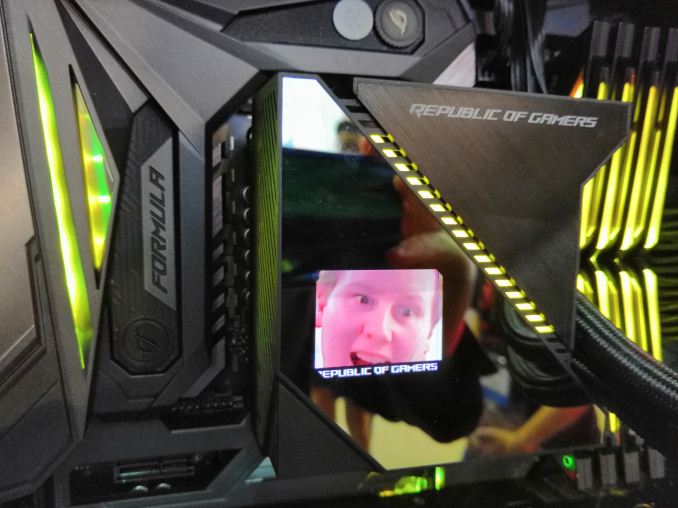
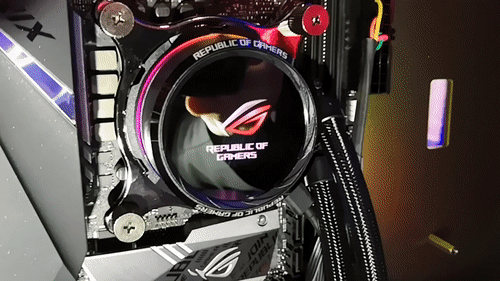

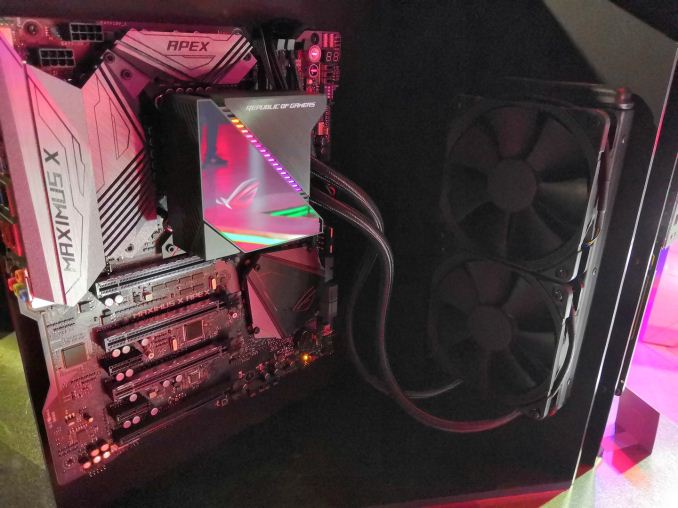

 Quote
Quote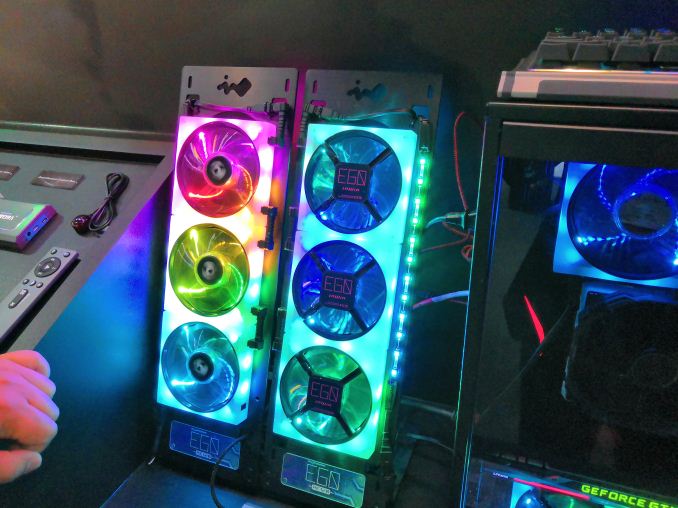
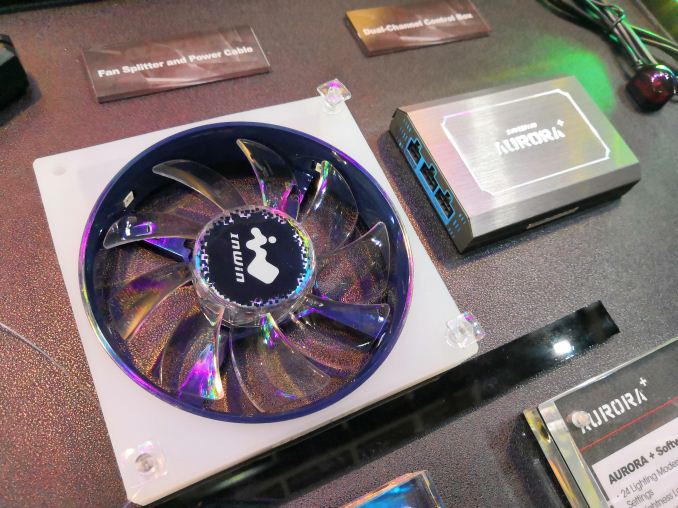
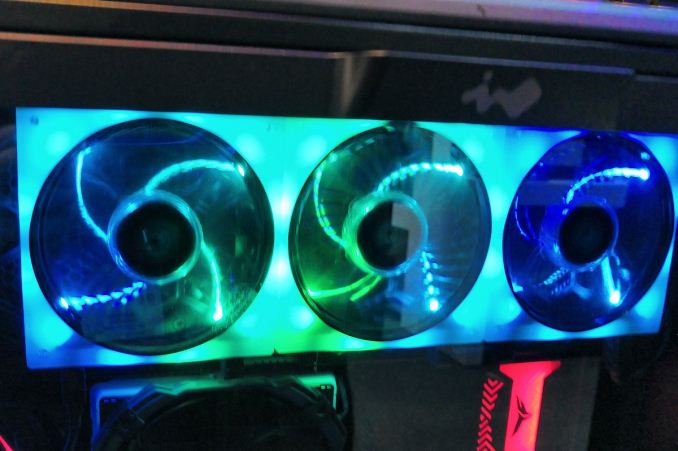
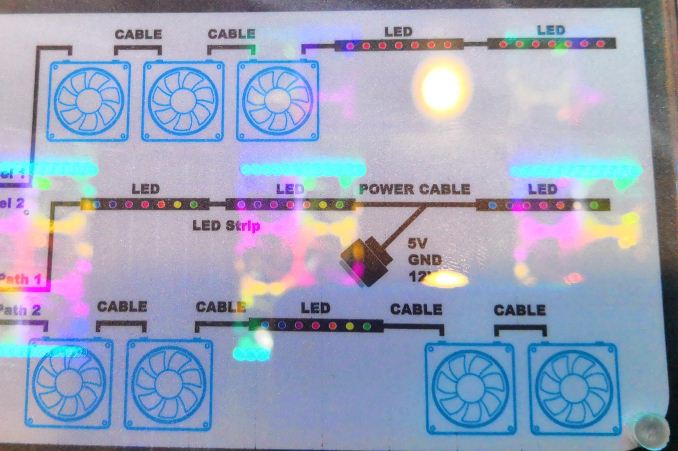
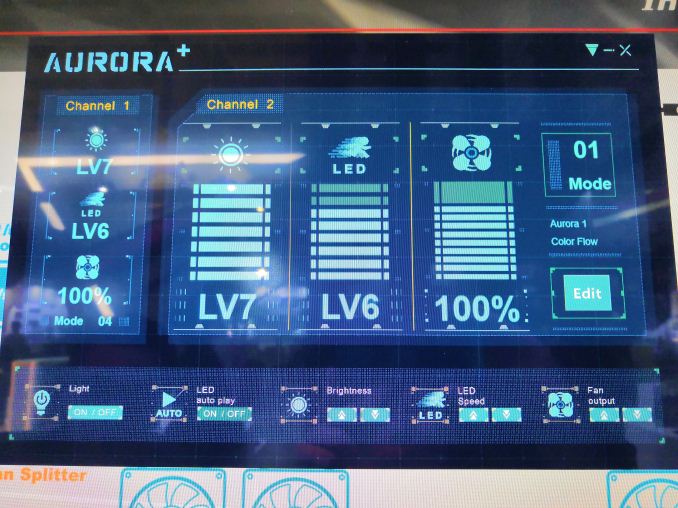

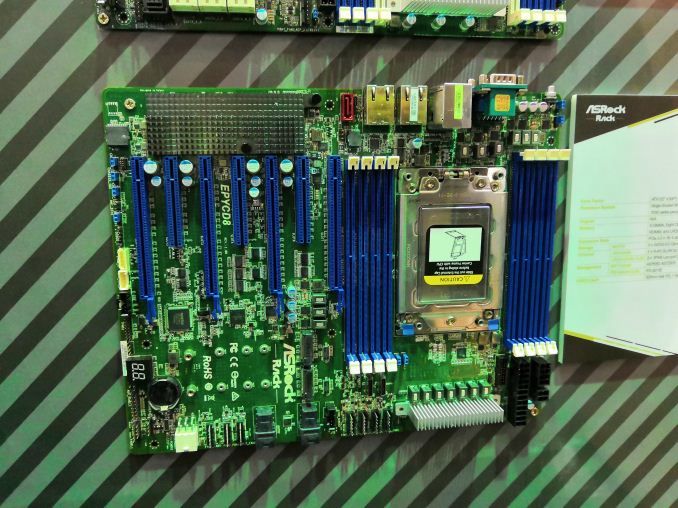
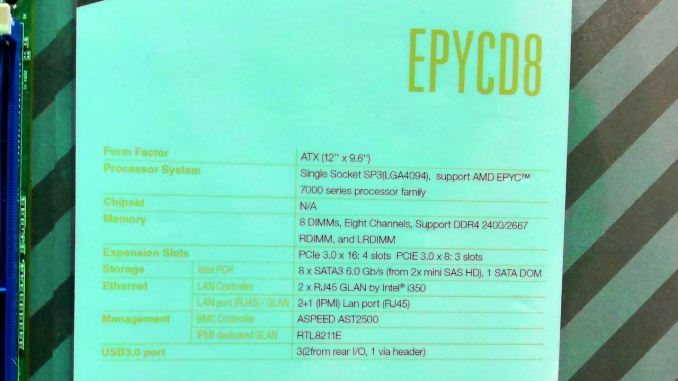
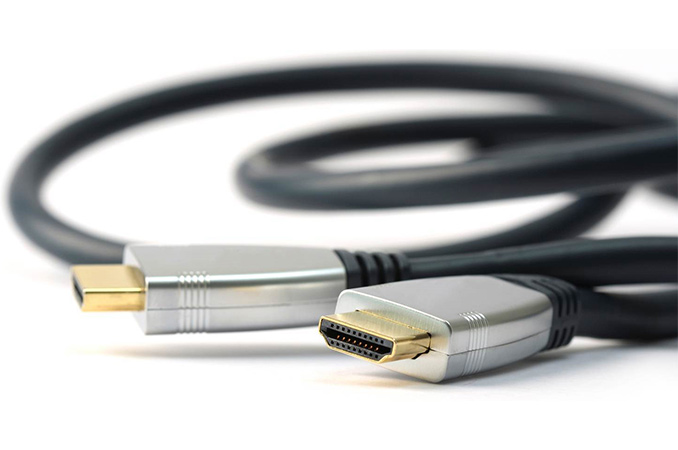
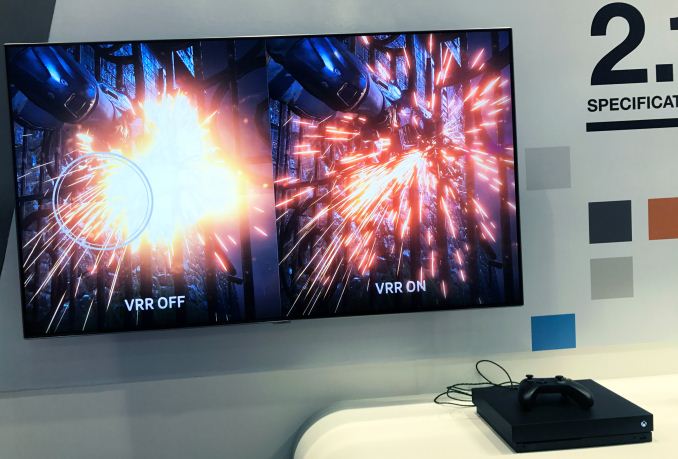
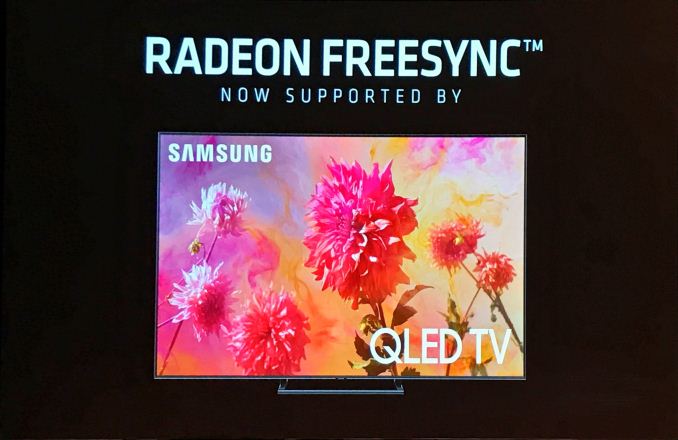
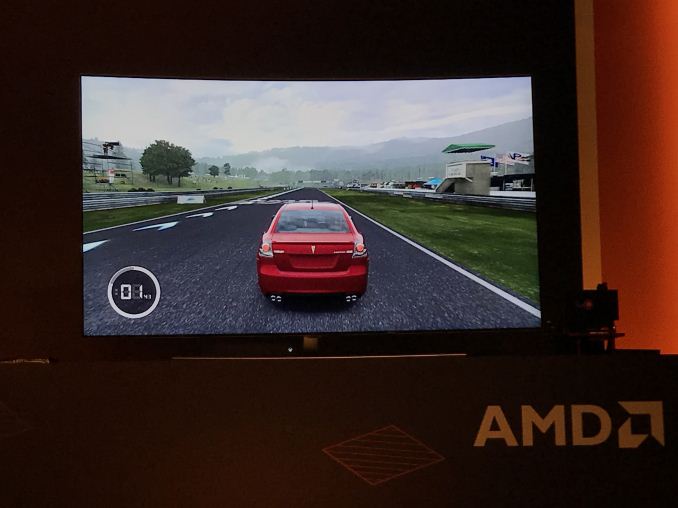
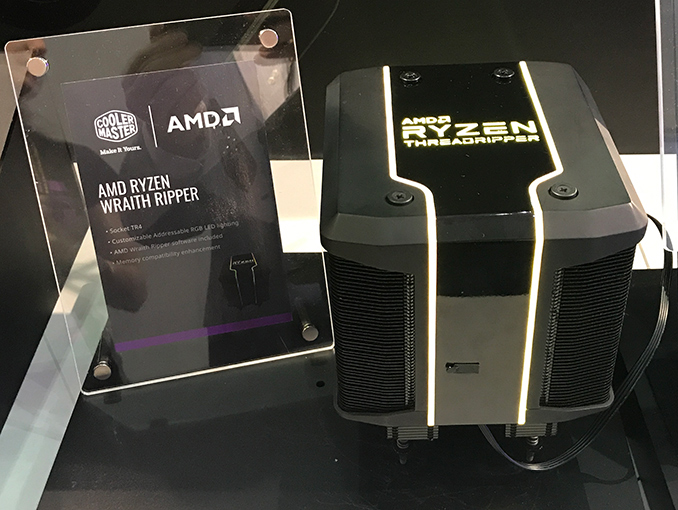


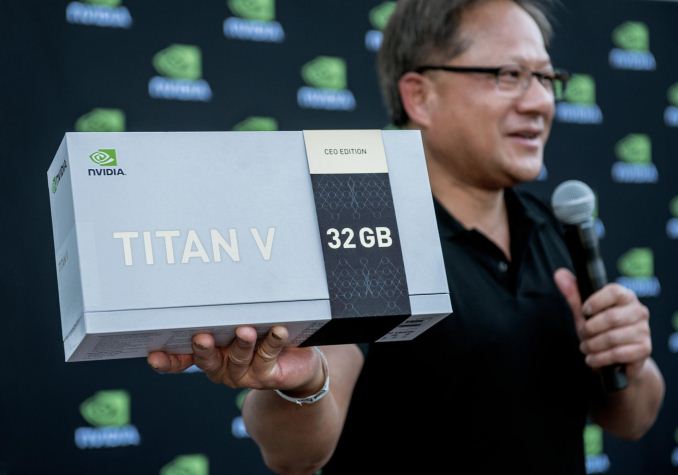
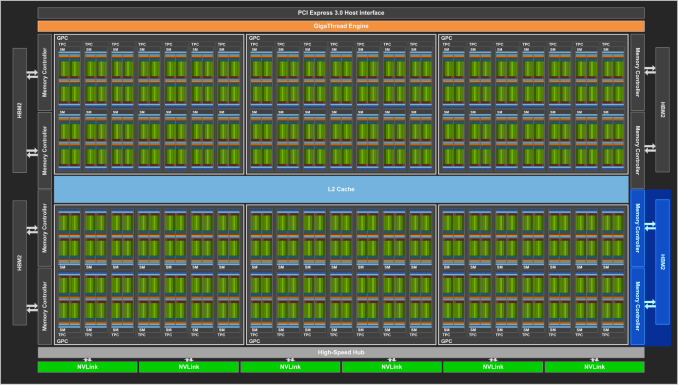


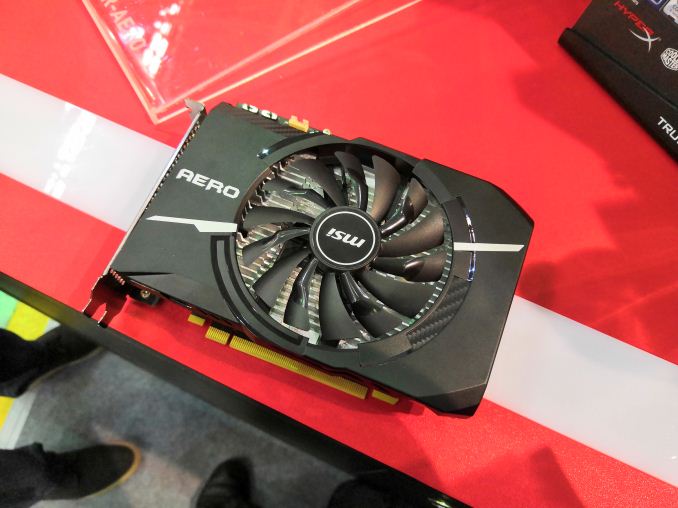
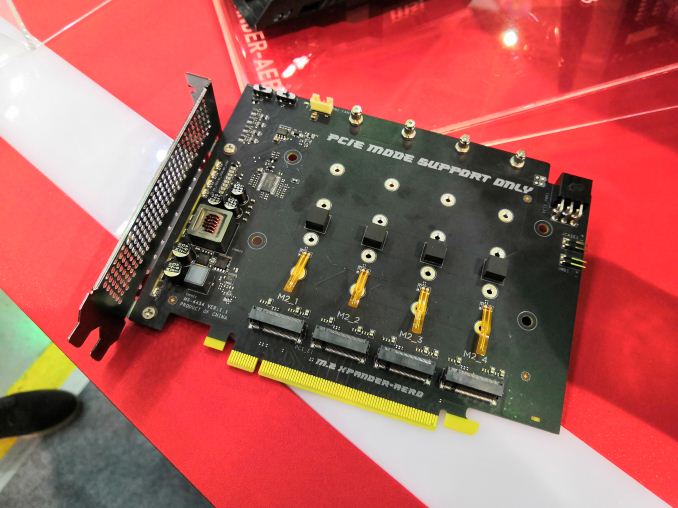

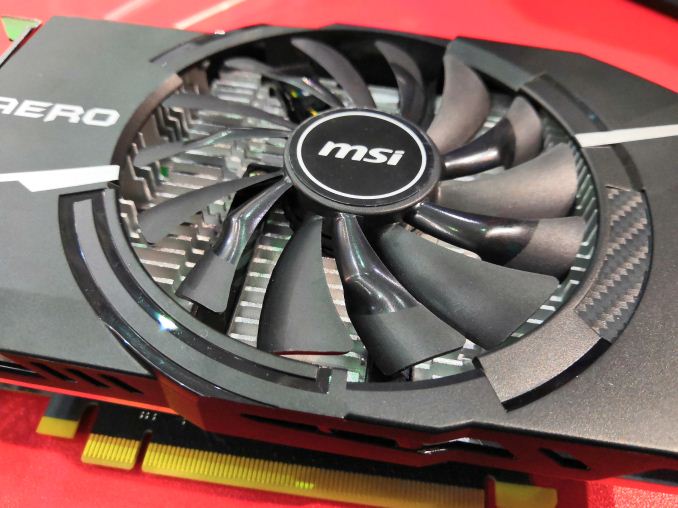
















Bookmarks